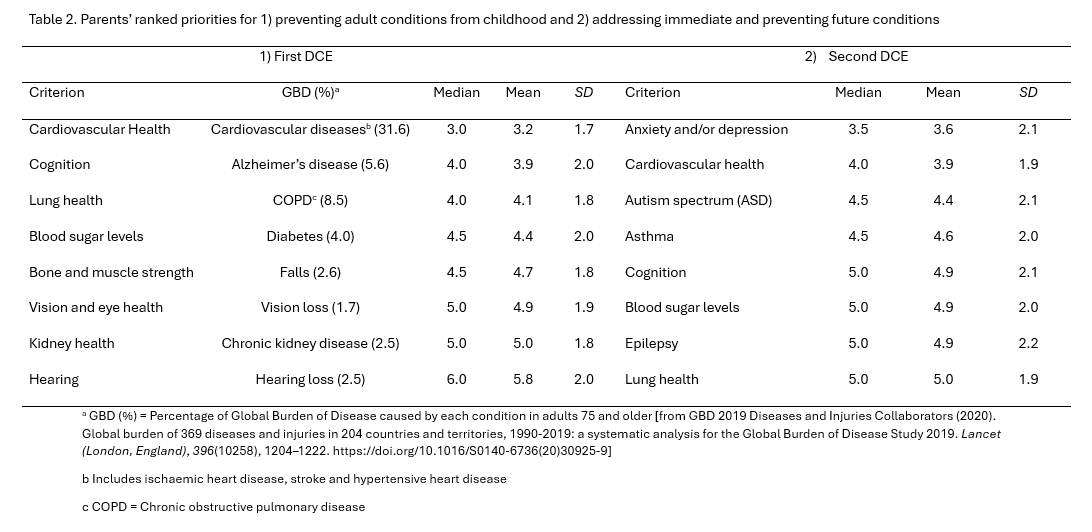Public Health & Prevention 3
Session: Public Health & Prevention 3
787 - Exploring parents’ priorities for children’s immediate and future health: results from two Discrete Choice Experiments
Monday, April 28, 2025
7:00am - 9:15am HST
Publication Number: 787.5035
Katie McBain, Murdoch Children's Research Institute, Parkville, Victoria, Australia; Susan Clifford, Murdoch Children's Research Institute, Parkville, Victoria, Australia; Dorothea Dumuid, University of South Australia, Ironbank, South Australia, Australia; Melissa Wake, Murdoch Children’s Research Institute, Parkville, Victoria, Australia
- KM
Katie McBain (she/her/hers)
PhD candidate
Murdoch Children's Research Institute
Parkville, Victoria, Australia
Presenting Author(s)
Background: Very little is known about how parents prioritize between addressing child-onset conditions and preventing chronic diseases of ageing. Generation Victoria (GenV), a child and parent cohort based in Victoria, Australia, aims to improve children’s health now and in the future. GenV offers a moment-in-time opportunity to incorporate parent’s priorities into its design to maximise its impact.
Objective: We aimed to explore parents’ preferences for interventions targeting different aspects of children’s health that impact both immediate and future conditions.
Design/Methods: We conducted two Discrete Choice Experiments (DCEs), hosted on the 1000minds platform. Parents participating in GenV received links to online DCEs when their children were aged between 6-24 months. Links were sent via GenV’s custom-designed app, GenV and Me, between February to June 2024. The first DCE asked parents to complete a series of choices between two hypothetical interventions, each aimed at preventing one of eight high-burden chronic diseases of ageing from childhood. The second DCE asked parents to choose between interventions aimed at preventing the four highest-ranked adult conditions from the first DCE or addressing four high-burden child conditions. We used R to analyse the mean, standard deviation and median rankings for each condition. We performed a Spearman’s correlation test to assess the relationship between parent’s rankings from the first DCE and the percentage of global disease burden caused by each condition.
Results: The first DCE was completed by 1866 parents and the second by 1343 parents. Participants’ demographic characteristics for each DCE are presented in Table 1. In the first DCE, parents ranked ‘cardiovascular health’ as their top priority, followed by ‘cognition’. ‘Hearing’ was the lowest-ranked priority. Parents’ rankings from the first DCE were very strongly correlated with the percentage of disease burden caused by each corresponding condition (Spearman’s correlation coefficient = -.90, p = .002). In the second DCE ‘anxiety and/or depression’ was the highest ranked priority, followed by ‘cardiovascular health’, ‘autism’ and ‘asthma’. Details on the rankings from each DCE are provided in Table 2.
Conclusion(s): Our results suggest that parents prioritize areas that are widely researched, have salient impacts on mortality and morbidity, and where translation efforts have been focused to raise awareness. These findings will support and validate GenV’s choices, to ensure evidence meets parents’ greatest concerns and fills important gaps in awareness.
Academic Statement.pdf
Table 2. Parents’ ranked priorities for 1) preventing adult conditions from childhood and 2) addressing immediate and preventing future conditions


